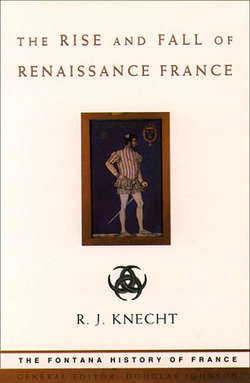Читать книгу The Rise and Fall of Renaissance France - R. Knecht J. - Страница 38
The Field of Cloth of Gold (June 1520)
ОглавлениеThe imperial election brought France and England closer together. Whereas in the past there had been four major powers in Europe, France, Spain, England and the Empire, now there were only three, Spain and the Empire having become joined in the person of Charles V. As France and the new Habsburg state seemed of roughly equal weight, England’s position was enhanced. Cardinal Wolsey, who directed Henry VIII’s foreign policy, revived the idea, first mooted in 1518, of a meeting between Henry and Francis. On 12 March he laid down the conditions of what has become known as the Field of Cloth of Gold. Charles, whose aunt Catherine of Aragon was Henry’s queen, tried hard to prevent the meeting or to secure its postponement. He visited England on his way from Spain to Germany and held talks with Henry VIII, but no one knows what they decided.
The Anglo-French meeting took place in June at a site between the English town of Guînes and the French town of Ardres. Providing suitable accommodation for the large number of participants was probably the biggest headache for the organizers. Henry erected a large temporary palace outside Guînes castle, while Francis put up a superb tent covered with gold brocade and striped with blue velvet powdered with gold fleur-de-lys. It was the tallest of some 300 or 400 pitched in a meadow outside Ardres.
The Field of Cloth of Gold consisted of two events: the initial meeting of the kings on 7 June and a tournament or feat of arms scheduled to last twelve days. Henry and his court crossed the Channel on 31 May. Soon afterwards, Wolsey with a magnificent escort called on Francis at Ardres and signed a treaty which provided for the marriage between the Dauphin and Mary Tudor. On 7 June, at an agreed signal, the two kings, each accompanied by a large escort, moved towards the Val Doré, where they faced each other on two artificial mounds. After a fanfare, Henry and Francis rode towards the bottom of the valley. They spurred their mounts as if about to engage in combat, but instead embraced each other. After dismounting, they retired to a tent where they were joined by Wolsey and Bonnivet. An hour later they emerged and presented their respective nobles to each other.
The ‘feat of arms’, which began on 11 June, lasted till the 24th. Complicated regulations had been drawn up to prevent accidents. The two kings did not fight each other: they competed each with his own team. The famous story of Henry being worsted by Francis in a wrestling match is probably apocryphal. What is certain is that the king of France soon tired of the rigid etiquette that had been prescribed. On 17 June he paid Henry a surprise visit. Bursting into his chamber, he exclaimed: ‘Brother, here am I your prisoner!’ Not to be outdone, Henry turned up in Francis’s bedroom two days later. This put everyone in a good mood. On 23 June mass was celebrated by Wolsey amidst great pomp on the tournament field. The two royal chapels sang alternate verses of hymns accompanied by an organ, trombones and cornets. Afterwards the pope’s blessing was conferred on both kings. Louise of Savoy announced that her son and Henry intended jointly to build a palace in the Val Doré where they might meet each year, and also a chapel dedicated to Our Lady of Friendship.
